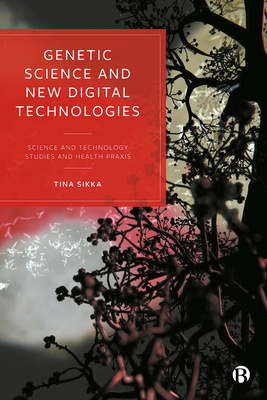There’s been a recent surge in media coverage of celebrities like Kim Kardashian, Paris Hilton, and Cindy Crawford purchasing and endorsing full-body MRI scans – ostensibly for preventative health purposes.
Should we be pressurised into doing the same? Many might baulk at the price. Companies like Ezra and Prenuvo provide such scans, the latter claiming its device scans for over 500 cancers and diseases, and charges up to $2,499 for its services. Yet, when the Kim Kardashians of the world assert that these technologies have “the ability to detect cancer and diseases such as aneurysms in its earliest stages” and claim that they had “really saved some of my friends’ lives”, their popularity becomes a bit more comprehensible.
Besides the dubious effectiveness of these technologies, the field of Science, Technology and Society (STS) raises important questions that, so far, have been overlooked in the media and in public conversations. The main question for STS is less about whether these technologies work as a diagnostic tool (i.e. whether they are capable of uncovering hidden diseases and saving lives – hint, they don’t) and more about what these technologies do to and for the people using them and the impact they have on the institutional settings we find them in.
Looking at connections between technology and society, the material and the social through a STS lens produces new knowledge about:
- the agency of these technologies;
- their place in networks or assemblages with other technologies, policies, institutions, norms and economies (and the effect of this); and
- their sociopolitical impact – particularly how they intersect with a person’s social location (gender, race, class, sexuality and dis/ability).
To begin with point 1, these scanning technologies should be understood as agential actors embodying built-in affordances, values and forces that, because they are now part of our contemporary health assemblage, will become integral to our understanding of what constitutes good health. They will inevitably effect and affect our understanding of the body in ways that replicate western, colonial ways of seeing and knowing in which health is understood as transparent, measurable and ascertainable. This lens also perpetuates faith in technology and innovation as the sites of sociomedical progress and, ideologically, fits nicely with the marketised way in which insurance companies, startups, workplaces and state institutions want health to be understood (as a consumable product), and where they want responsibility to be placed (on the individual).
This links with point 3, where critical STS conceptions of health highlight further concerns about what we think it means to be healthy – particularly when circumscribed by bodily boundaries. Health needs to be understood as part of a whole, and as a process in which social factors (e.g. sustained access to care, education, sustainable food, open space, safe housing, childcare and reliable income) need to be addressed. Contemporary health technologies often sustain neoliberal and responsibilised understandings of health that place the focus on the individual rather than on governments and corporations for whom profit, economic determinants and austerity are prioritised over the wellbeing of citizens.
Finally, point 2 reflects insights from STS scholars that prioritise the affective relationality of technologies and how experiential forms of knowledge draw out hidden inequalities and relations of power. For full-body scans, this includes the panic, guilt and anxiety of testing regimes whose findings can result in unnecessary and invasive procedures. It also draws attention to the ways in which health is gendered (think about care within the family and on whose shoulders sustaining ‘good’ family scans might fall); racialised (such that access to these scans will cleave along racial lines and will likely be used to push faulty and harmful notions of biological difference and racialised hierarchies of health); and ableist (since they rely on ableist conceptions of what it means to embody an ideal state).
The connection between the political economy of full-body scans and their endorsement by celebrities illustrates the relationship between technoscience and capitalism. We can see the ways in which cultural capital (e.g. the ability to access technology and expertise) intersects with the performance of care for the self and responsible citizenship. While this perspective is perhaps beyond the domain of STS, it still sits firmly within its objective to engage in interdisciplinary forms of scholarship that address ‘the real, what there is in the world…the good and the bad…values and politics.’
When it comes to MRI scans, applying a STS lens situates their use within larger groups of forces, effects and institutions while also reflecting the microphysics of power, norms, materiality, culture, inequality and history. Thinking about technology in this way makes it possible to have more nuanced conversations about health, how we define it, and how we might find more equitable ways of attaining it.
Tina Sikka is Reader in Technoscience and Intersectional Justice and Director of EDI at the School of Arts and Cultures, Newcastle University.
 Genetic Science and New Digital Technologies edited by Tina Sikkae is available to order for £85.99 here.
Genetic Science and New Digital Technologies edited by Tina Sikkae is available to order for £85.99 here.
Bristol University Press/Policy Press newsletter subscribers receive a 25% discount – sign up here.
Follow Transforming Society so we can let you know when new articles publish.
The views and opinions expressed on this blog site are solely those of the original blog post authors and other contributors. These views and opinions do not necessarily represent those of the Bristol University Press and/or any/all contributors to this site.
Image credit: cottonbro studio via Pexels


